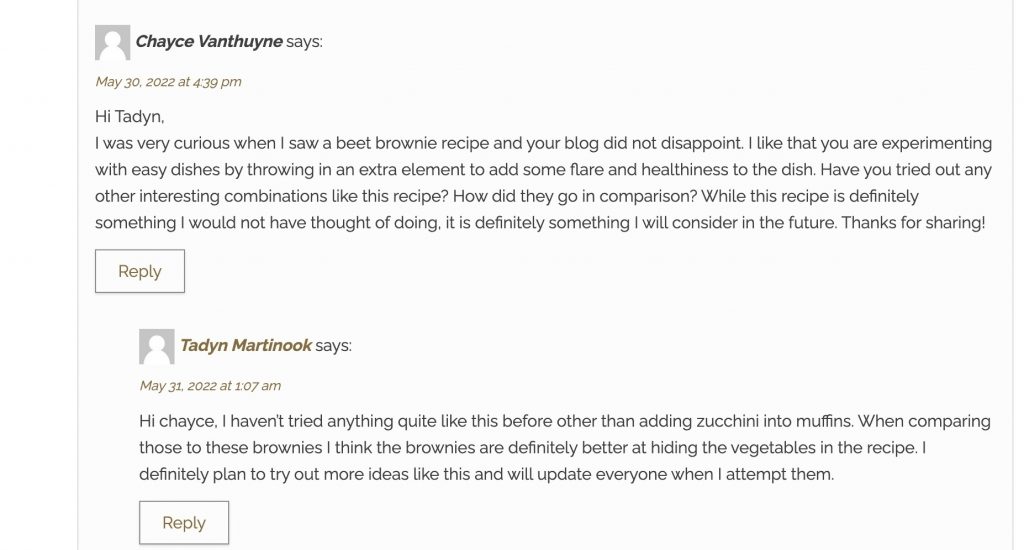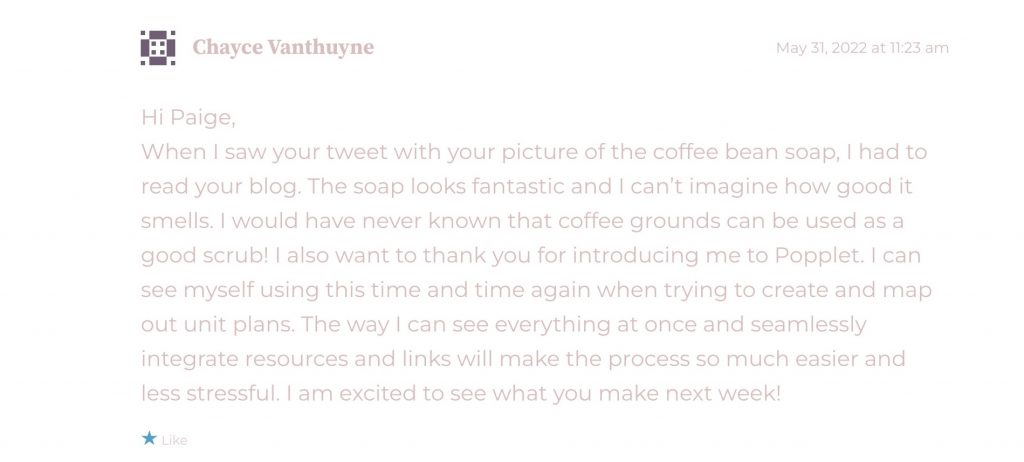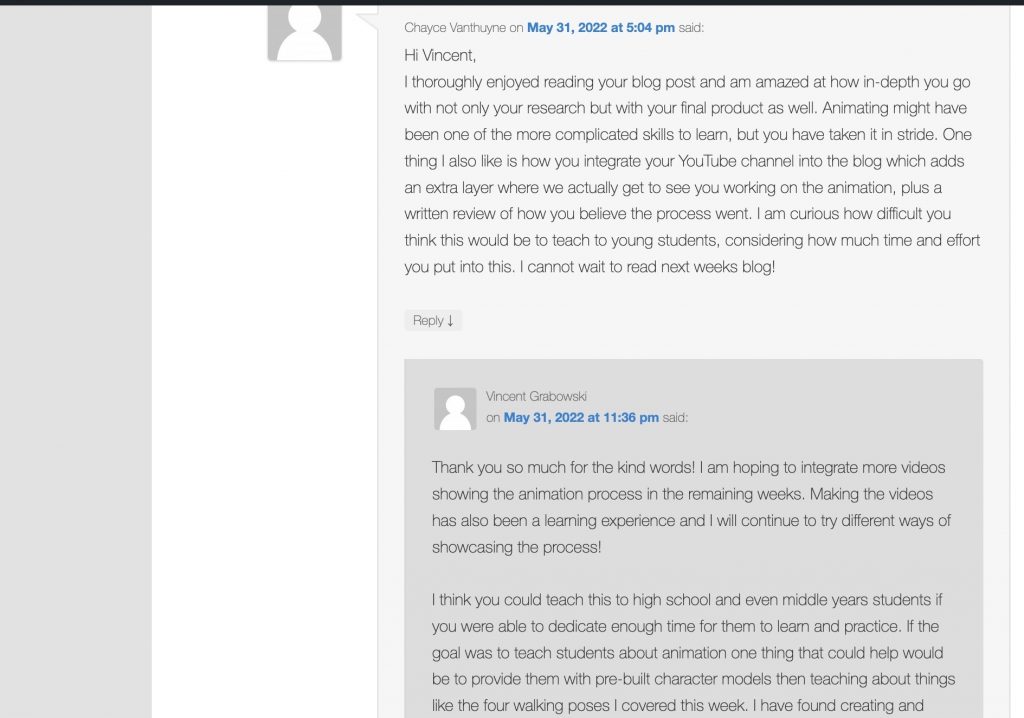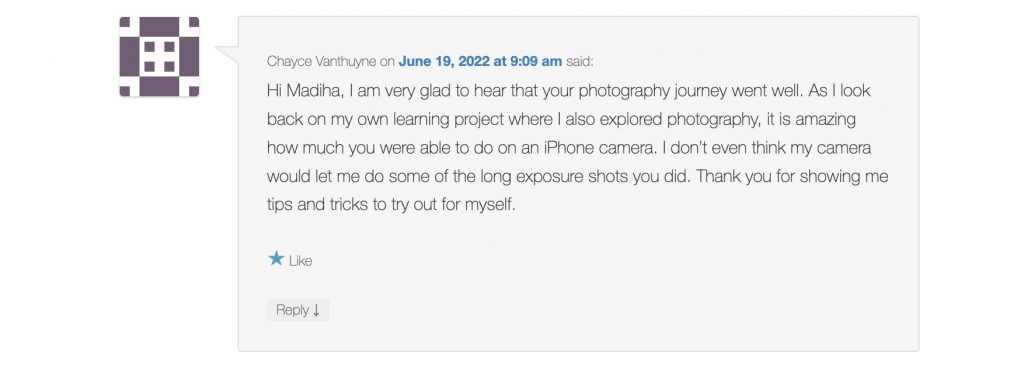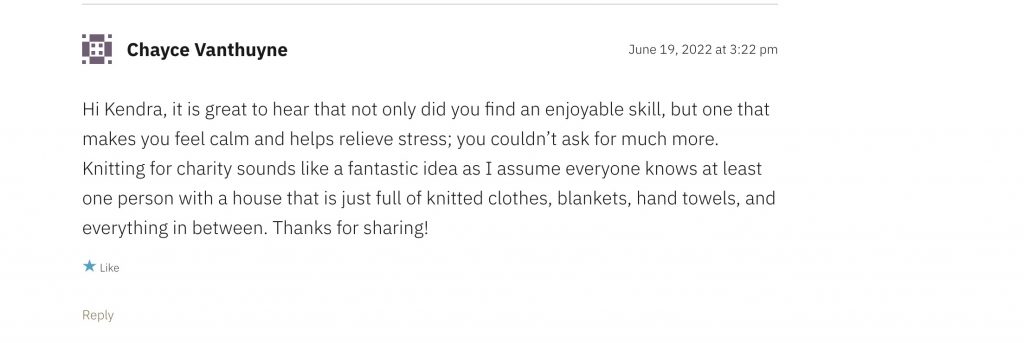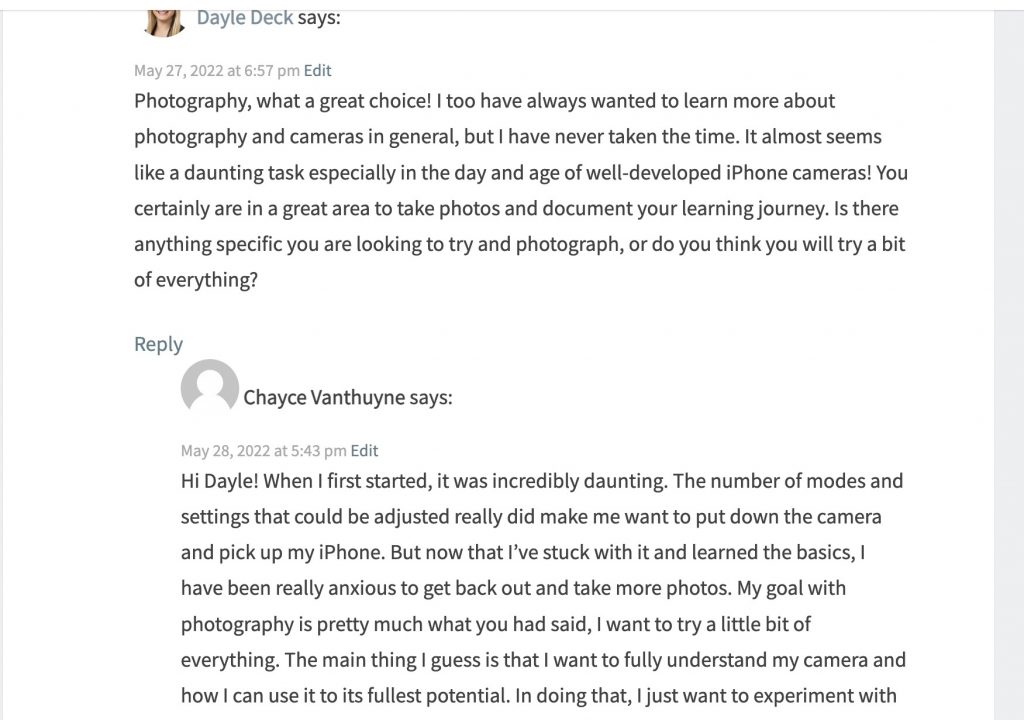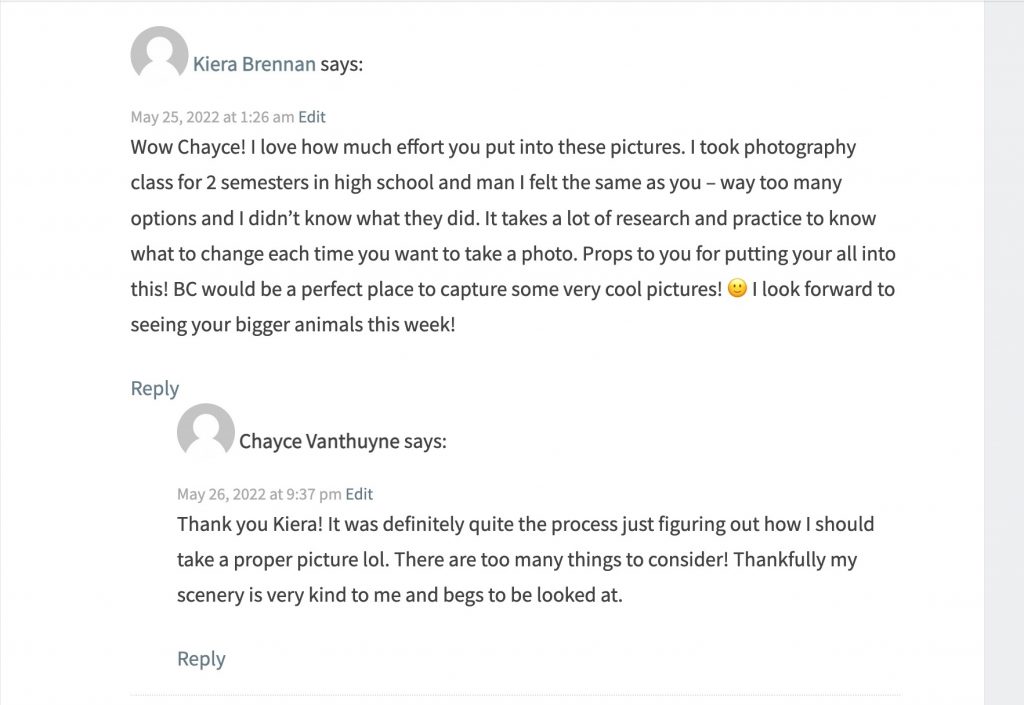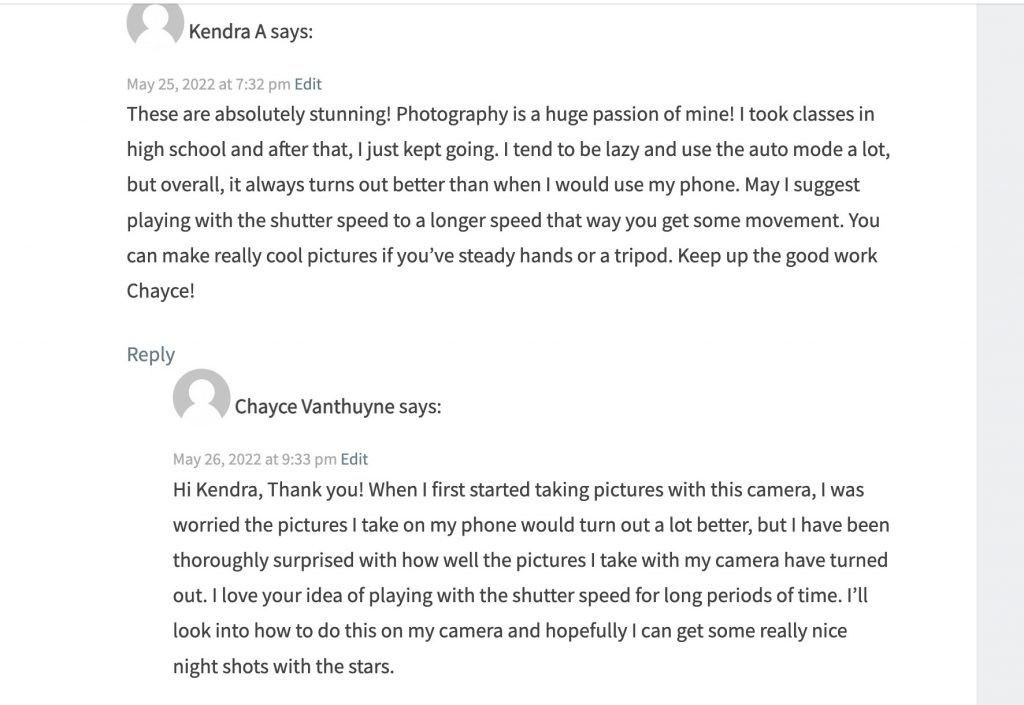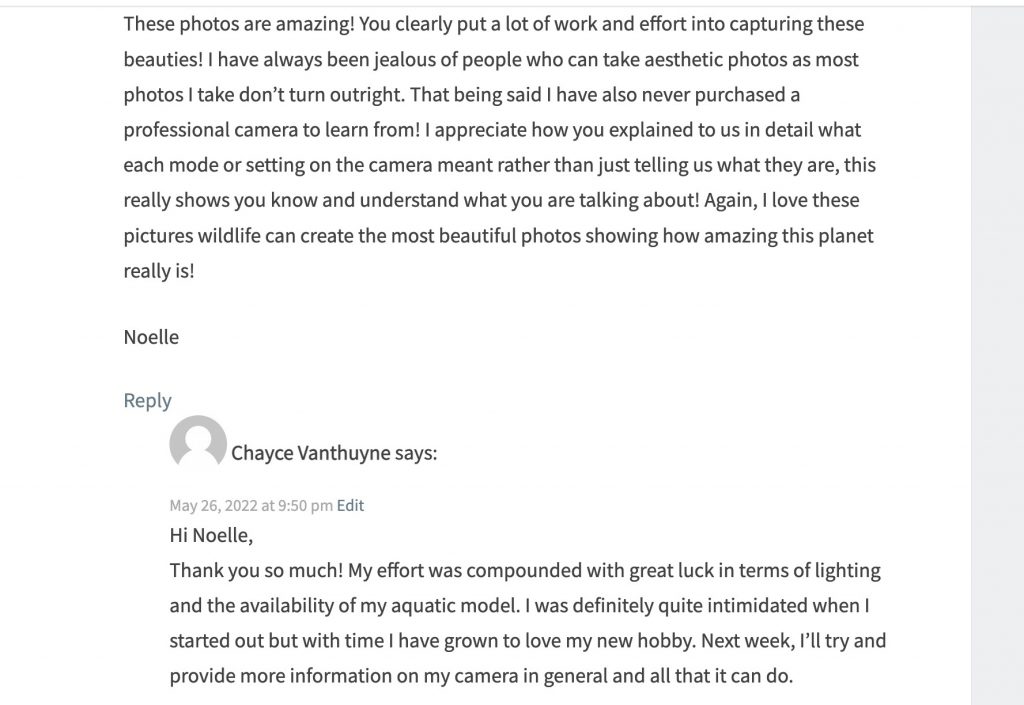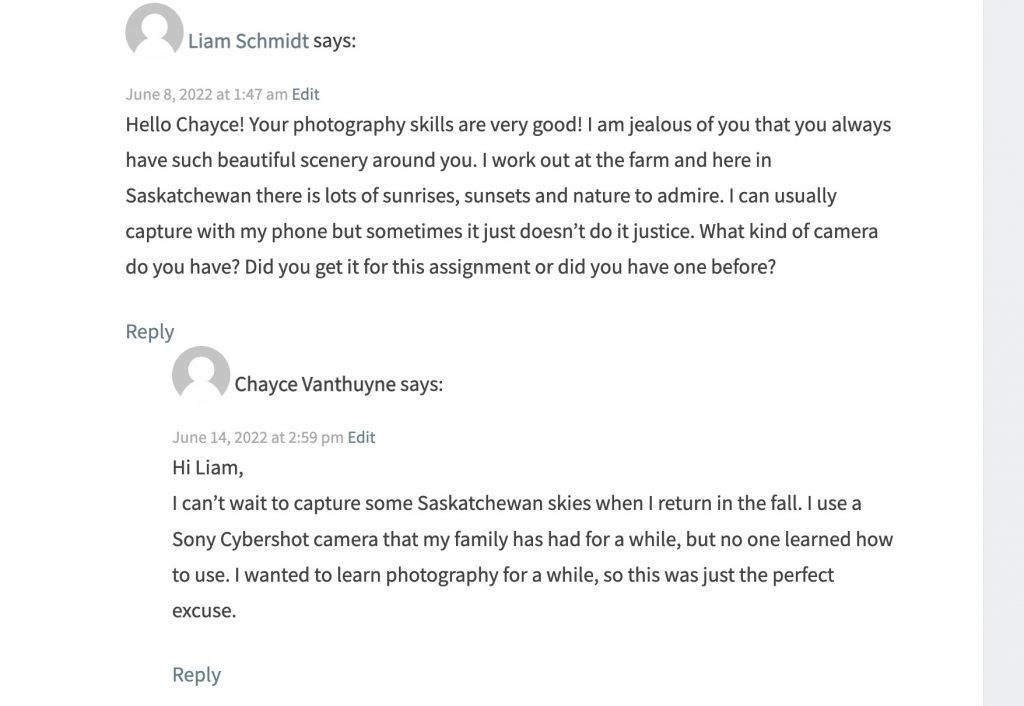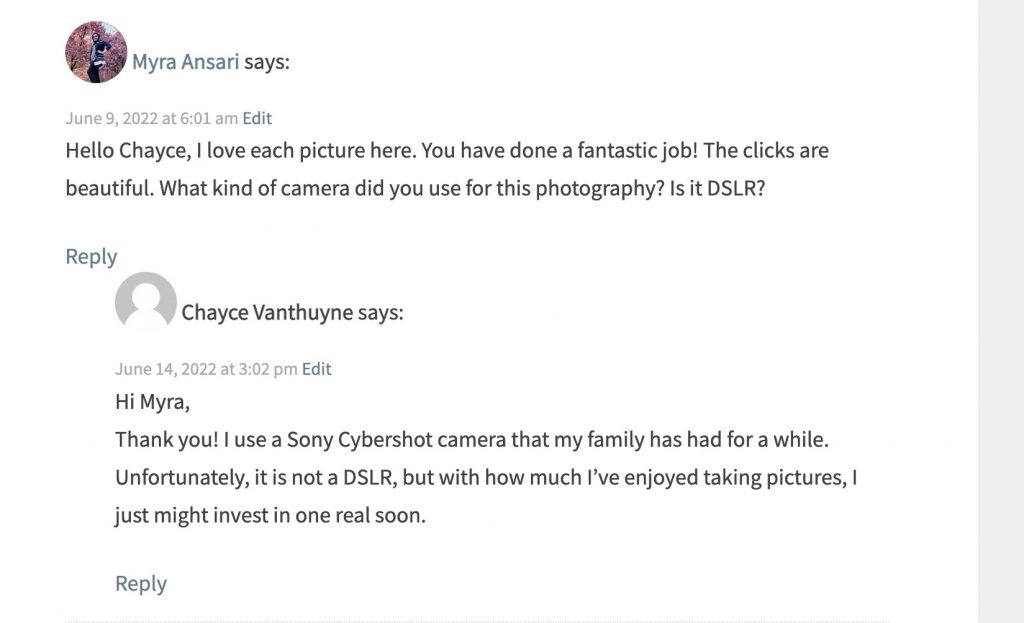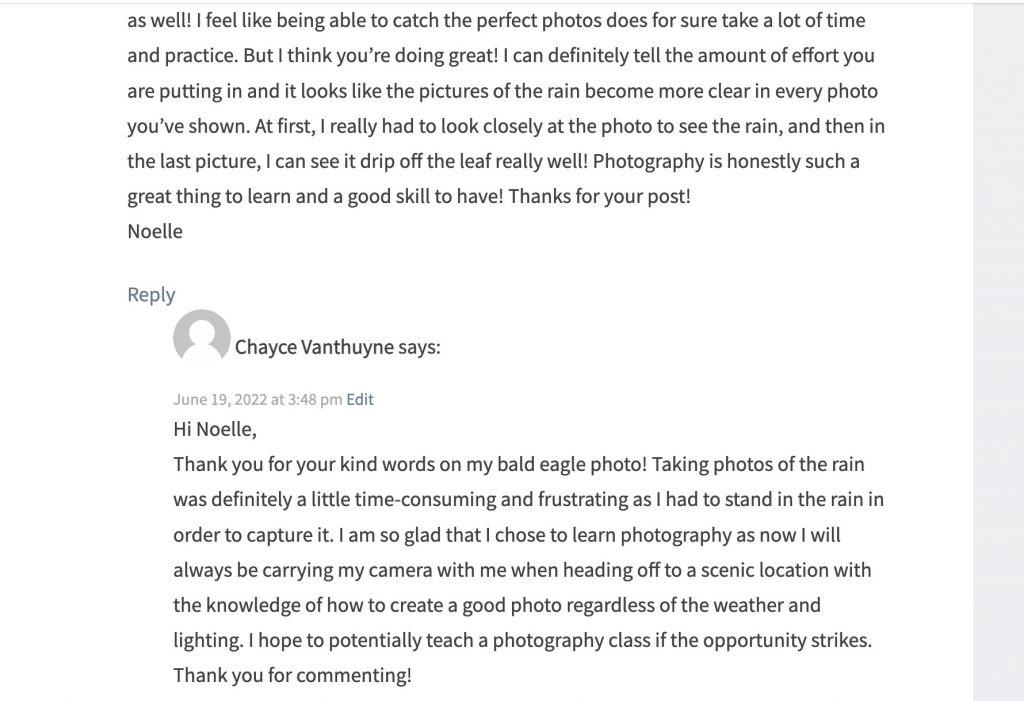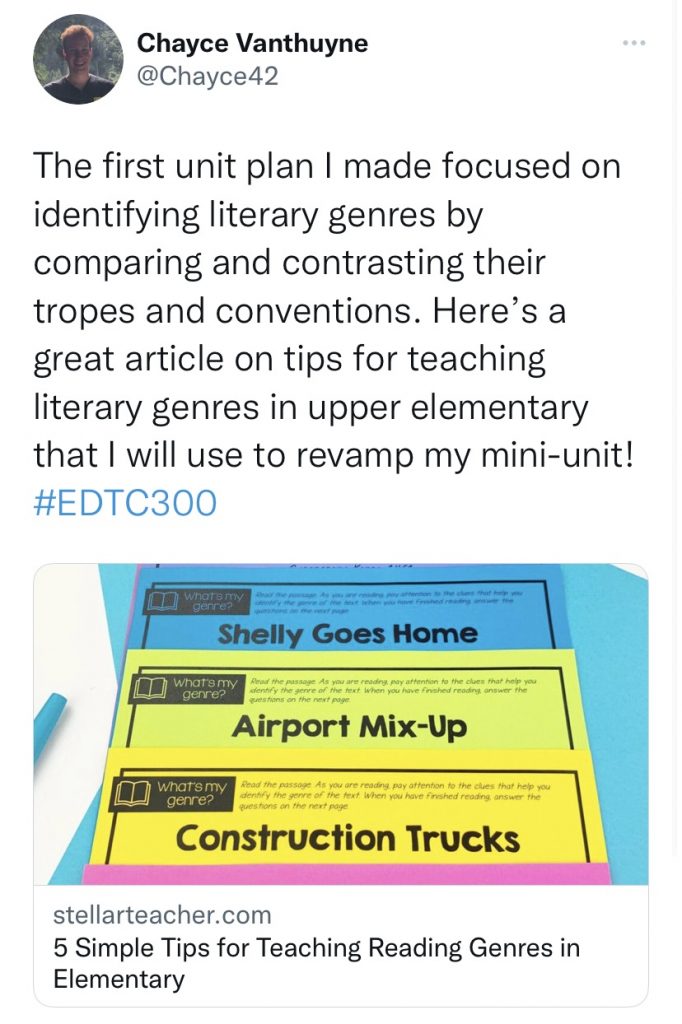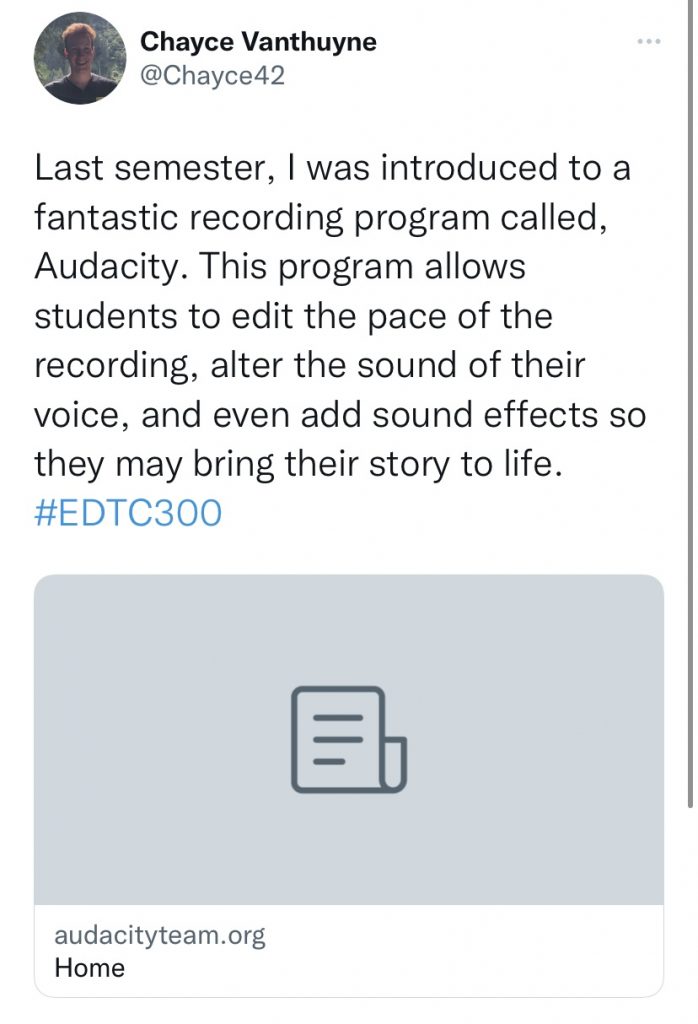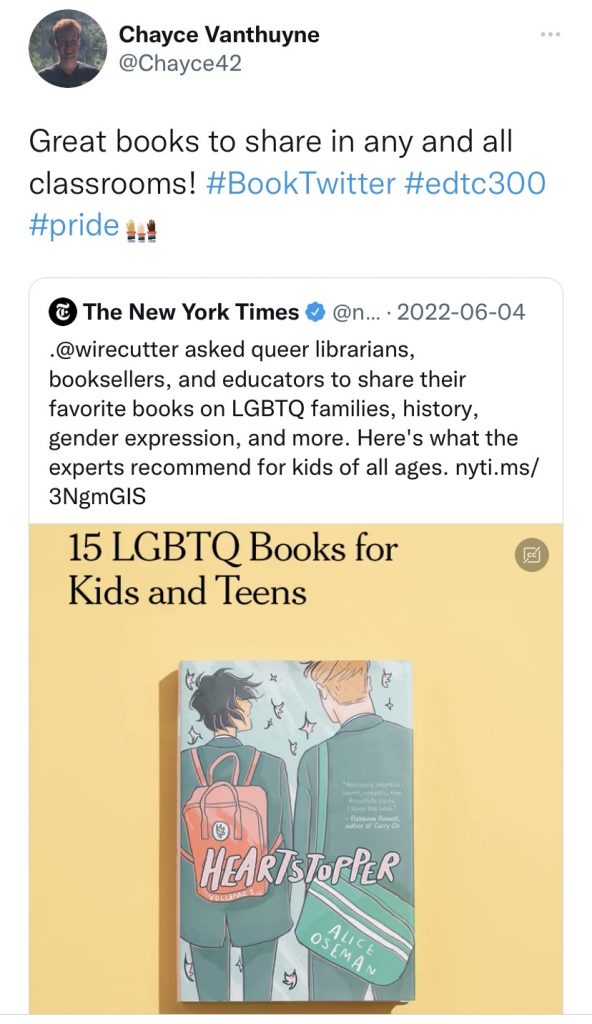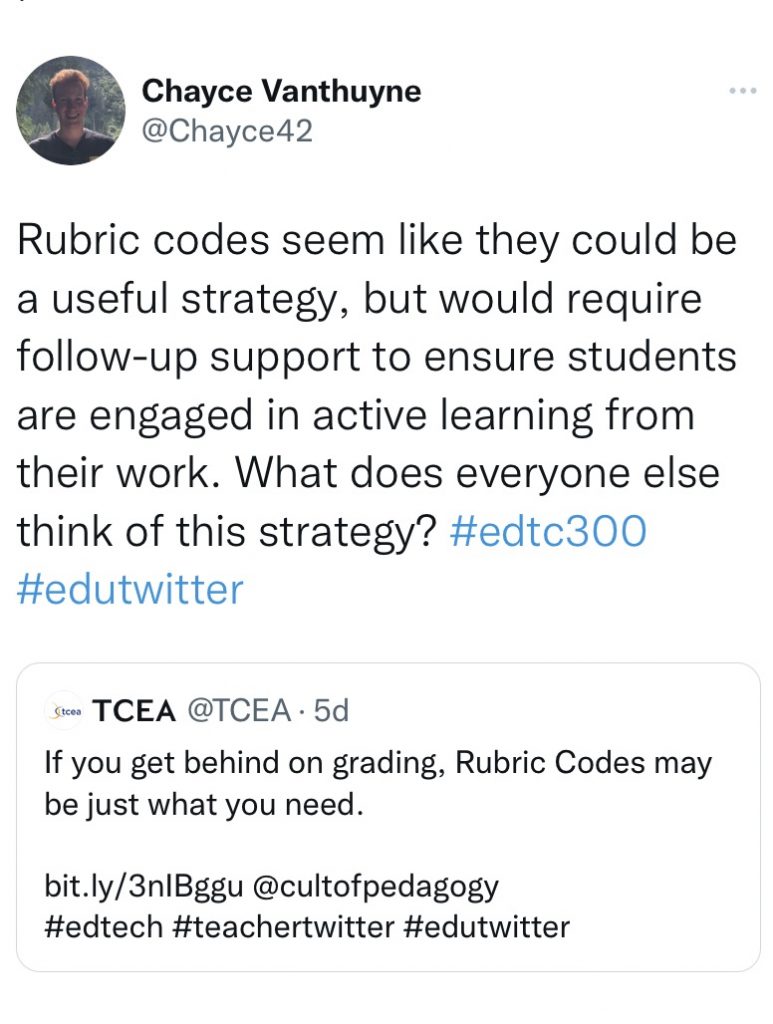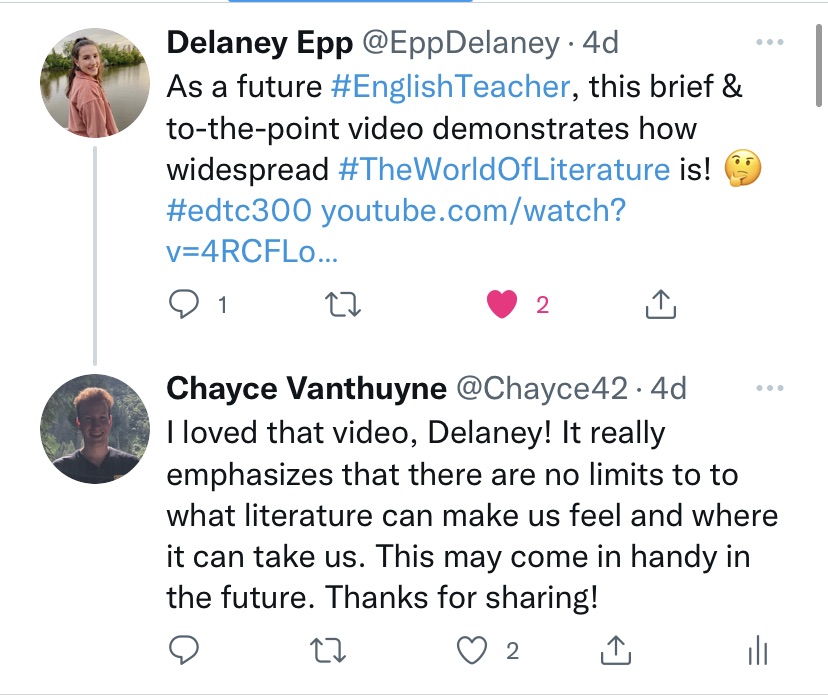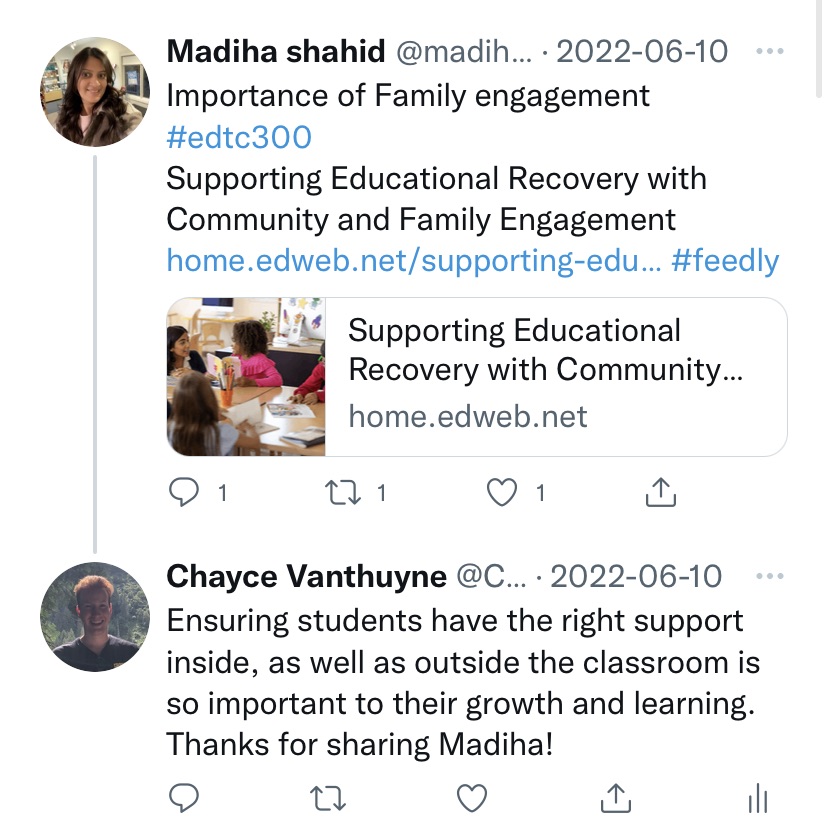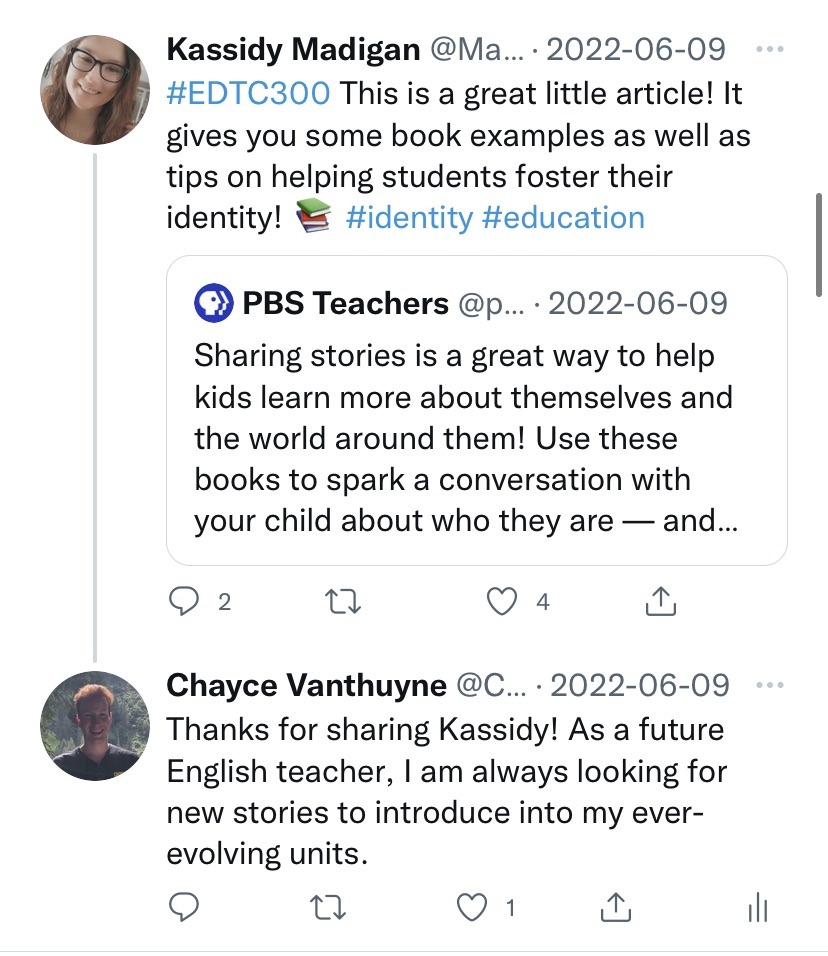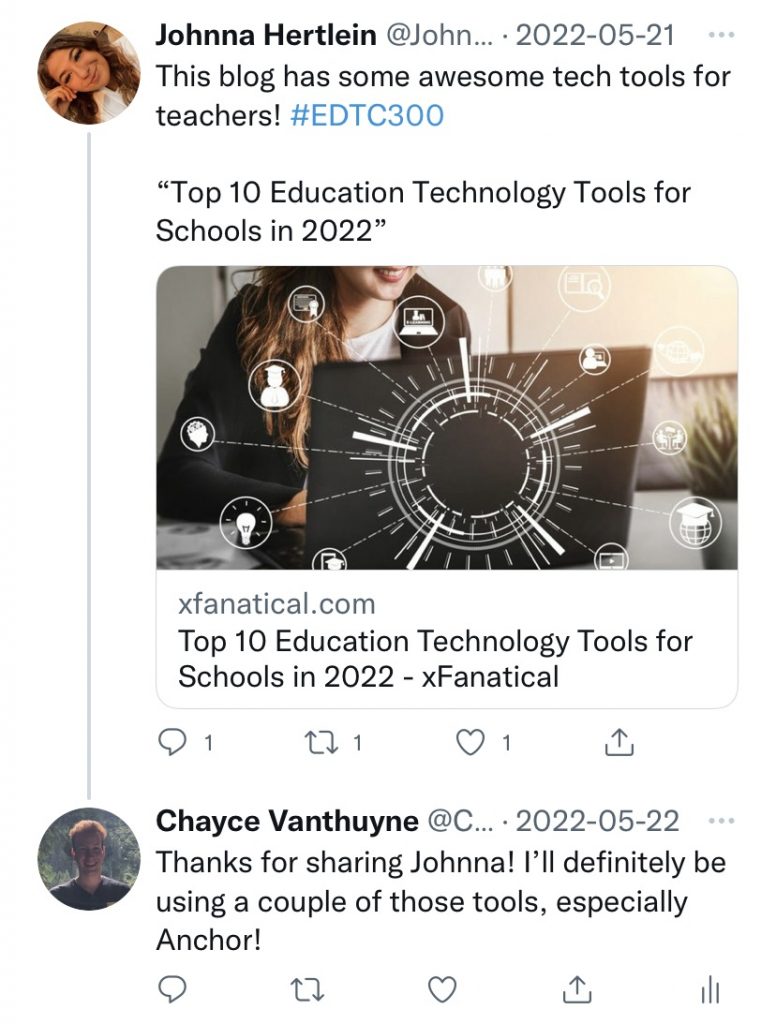Contributions to the Learning of Others
Throughout EDTC300, our class has not only learned about the importance of enhancing our future student’s digital literacy, but also the importance of being a part of a digital network of learning that allows everyone to share information and asks questions to provoke discussions. EDTC300 was a great opportunity to be introduced to these digital networks and start to build connections with fellow classmates and educators. I was very happy with the willingness of my classmates to share new resources and tools they found that could work well in the classroom to help build our own students’ digital network. I have come away with a lot more useful blogs, videos, and contacts than I truly expected to. Our class communicated largely through Twitter and by commenting on each other’s blog posts as these two digital spaces were where most of our findings were shared. In this blog post, I will go through how and where I believe I helped contribute to some of my classmate’s learning throughout this short semester.
Commenting on other’s blog posts
Much of our independent learning came from our blog posts where we gave weekly updates on the progress of our learning projects and shared educated takes on topics surrounding digital literacy & citizenship. I enjoyed seeing the progress that people were making on the skill they had wanted to learn, and how much fun they were having while doing it. Maybe because of how short the spring semester is or because it is summer, but the dedication that went into these projects was amazing. I tried to comment on several classmates’ posts weekly but completely forgot to keep track of who’s blog and which post I commented on. Here are some of the comments of mine I found, but I apologize as I know some are missing.
I was very happy to go back and look through my comments and read the responses I had received on some. It was fulfilling to know that my comments made some classmates happy and gave them an opportunity to think about something new they could try in the future.
Replying to comments on my blog posts
To ensure I was getting the most out of the blogging experience and to let my classmates know I appreciated their comments, I tried to respond to every one of my classmate’s comments to further establish myself in our digital learning network. I would answer questions about my camera and things I have tried and would thank them for their comment and suggestions they might have.
By replying to those who commented on my posts, I felt that this would show that I appreciated their comments and encourage them to comment on other posts as well. This did work as our professor, Dr. Katia Hildebrandt reminds us, that you get back what you give, especially in an online space.
Before this class started, I hardly ever used Twitter. I only downloaded it about three months before this class had started as a way to keep up with quick news updates surrounding the situation in Ukraine. I had found some Ukrainian news sites that were giving real-time updates on what was happening in the country. Other than that, I had no other use for it. While I am still hesitant about Twitter in general and using it in my everyday life, I now see a larger use for it. Throughout EDTC300, it seemed that Twitter was the best and most efficient way for all of us in the class to stay connected and share new information with each other. We were able to easily post articles, blogs, videos, apps, and even software that we felt was beneficial to us and potentially to our fellow classmates and educators. One of the coolest tools I discovered in this class that helped my communication with classmates and educators was Tweetdeck. The ease of organization with Tweetdeck allows you to simplify your Twitter feed. Tweetdeck was especially useful when our class participated in a SaskEdChat. Tweetdeck allows you to easily customize what you want to see on Twitter by adding a deck that filters the feed so that you only see a particular person’s tweet or tweets from a hashtag instead of having a single feed with everyone’s tweets.
To post every tweet I made during the course of this class would be far too much work, so here are the tweets that I think best show my contribution to helping the learning of others through posting and creating access to articles, blogs, videos, and editing softwares. If you would like to view my Twitter account in its entirety, just click here.
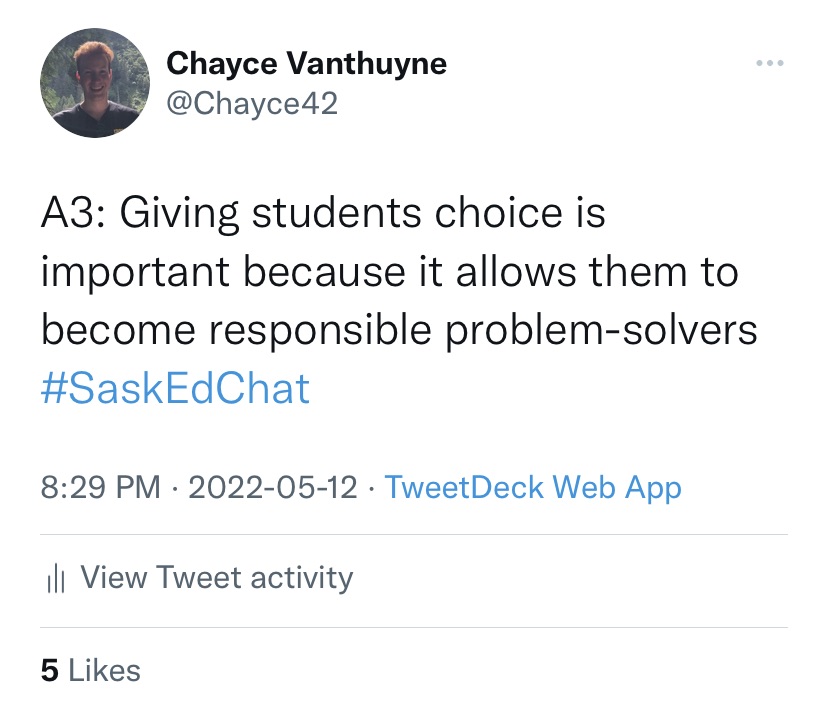
With my Twitter, I tried to share resources and tools that I felt I would definitely implement in my classroom. I wanted each link I shared to have personal value to me and how I would like to teach. As you can clearly see, I am a future ELA teacher who is looking to introduce more multimedia technology into my classroom through the use of audiobooks, movies, and screenwriting. The best part of ELA is that it has flexibility that allows opportunities to learn beyond the pages of a book.
My use of Twitter did not stop at posting my own tweets. Like my blog posts, I wanted to ensure that I was an active and contributing member of our digital network so I made sure to interact with others on Twitter by liking, retweeting, and commenting on my classmate’s tweets. Here are just some of my comments.
Knowing that others support your work and what you put out is a great feeling that only encourages you to post and interact with others a lot more. While I was hesitant to be this open and outgoing in an online space, especially being secluded in the mountains for two years, I enjoy being a part of an online network that encourages learning from others and sharing what you know and find. As I head into my internship this fall, I am very excited to continue being a part of this network while actually practicing teaching so that I may get quick advice from others also heading into internship and also share what I have found has worked for me so far. This is only the beginning.


